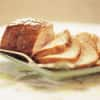Getting to Know: Essential Pork Cuts
Here are the 12 cuts of pork we use most often in the test kitchen, along with notes on how to cook them.
Here are the 12 cuts of pork we use most often in the test kitchen, along with notes on how to cook them.
Pork Loin: The large, tender loin is from the pig’s back, and it’s best roasted (we like to sear it first to provide extra flavor). Lean pork loin can dry out if cooked beyond 140 degrees—use an instant-read thermometer to make sure you cook it correctly. You can buy the loin bone-in or boneless. One way we enjoy a boneless loin roast is seared then roasted with a honey glaze.
Pork Chops: Pork chops come thin or thick cut; bone-in or boneless; and from the sirloin or from the shoulder, rib, or center of the loin. In the test kitchen, we prefer bone-in rib and center-cut loin chops for sautéing or grilling; blade chops (cut from the shoulder) are fattier and better braised. To avoid overcooking, cook lean chops to an internal temperature of 145 degrees. For extra insurance against dried-out chops, brine them before cooking.
Pork Butt: To coax the most from pork butt, a tough, fatty, relatively inexpensive cut from the upper part of the pig’s shoulder, slowly smoke, roast, or braise it to tenderness. This cut—also called Boston butt—comes bone-in or boneless, weighs 6 to 8 pounds, and is often shredded after cooking. If we don’t plan to shred it, we tie the roast before cooking.
Ham Hocks: Ham hocks give porky (and sometimes smoky) flavor to soups, stews, and pots of long-simmered greens. Cut from the lower portion of the pig’s hind leg, the hock has lots of fat, bone, and connective tissue, plus a little meat, so it requires long cooking to release flavor and tenderize. Ham hocks are usually sold smoked or cured, although fresh ones are available, too.
Picnic Shoulder: Just below the pork butt, where the pig’s front leg meets its torso, is the picnic shoulder, also called the pork shoulder. Like the pork butt, the shoulder is fatty and needs long cooking, but unlike the butt, it’s usually sold bone-in. The picnic shoulder has a considerable cap of fat and skin—perfect for making crackling. Don’t confuse picnic shoulders with picnic hams: The latter are smoked.
Spareribs: Cut from near the fatty belly of the pig, spareribs include the rib bones, the meat between them, and the brisket bone near the pig’s chest. They can weigh more than 4 pounds per rack. We prefer the slightly smaller St. Louis–style ribs (seen here), which fit better on a backyard grill because the bones and meat from the brisket section have been removed. They cook more quickly and evenly, too.
Baby Back Ribs: These ribs come from the back of the pig, along the vertebrae. They’re smaller than spareribs, usually less than 2 pounds per rack. These ribs have more meat and less connective tissue than spareribs do, which is good, but there is a drawback: Baby backs are relatively lean, so they can easily dry out if overcooked.
Country-Style Ribs: These ribs are made from halved or butterflied rib chops from the blade (shoulder) end of the tenderloin. They contain both dark meat from the shoulder and light meat from the loin; we like to brine them (to keep the white meat moist) and then pound them to an even thickness (so the dark meat cooks through faster).
Pork Tenderloin: Pork tenderloin, the muscle that runs down either side of the backbone, is lean, mild, and, yes, tender—in fact, it’s the single most tender part of the pig. We like to sear tenderloins and then finish them either in the oven or on the cooler part of the grill. Before you start cooking, trim off the shiny membrane (it’s called the silverskin, and it’s unpleasantly chewy).
Fresh Ham: Most of us think of ham as a pink haunch that’s smoked, fully cooked, and ready to eat. Fresh ham is none of those things: It’s simply the pig’s upper hind leg. Whole fresh hams can weigh up to 25 pounds, so they’re usually broken down into the sirloin (or “butt”) end closer to the torso, and the tapered shank end (seen here; we prefer this cut for easy carving). Brine fresh ham before cooking it to keep it moist.
Cured Ham: Cured city hams are wet-cured in brine, while country hams are dry-cured in salt and then aged. If the label says anything more than “ham” or “ham with natural juices,” don’t buy it. Also avoid boneless hams, which can be spongy. Our favorite country ham is Harper’s Grand Champion Whole Country Ham. Our winning spiral ham is Cook’s Spiral Sliced Hickory Smoked Bone-In Honey Ham.
Pork Belly: The fatty, succulent pork belly has become a hugely popular restaurant cut. Chefs braise and sear sections of the belly to create a dish that’s crisp on the outside and unctuous within. Bacon is pork belly that’s been salted, (usually) sugared, and smoked. Pancetta, sometimes called Italian bacon, is similar but not smoked.


